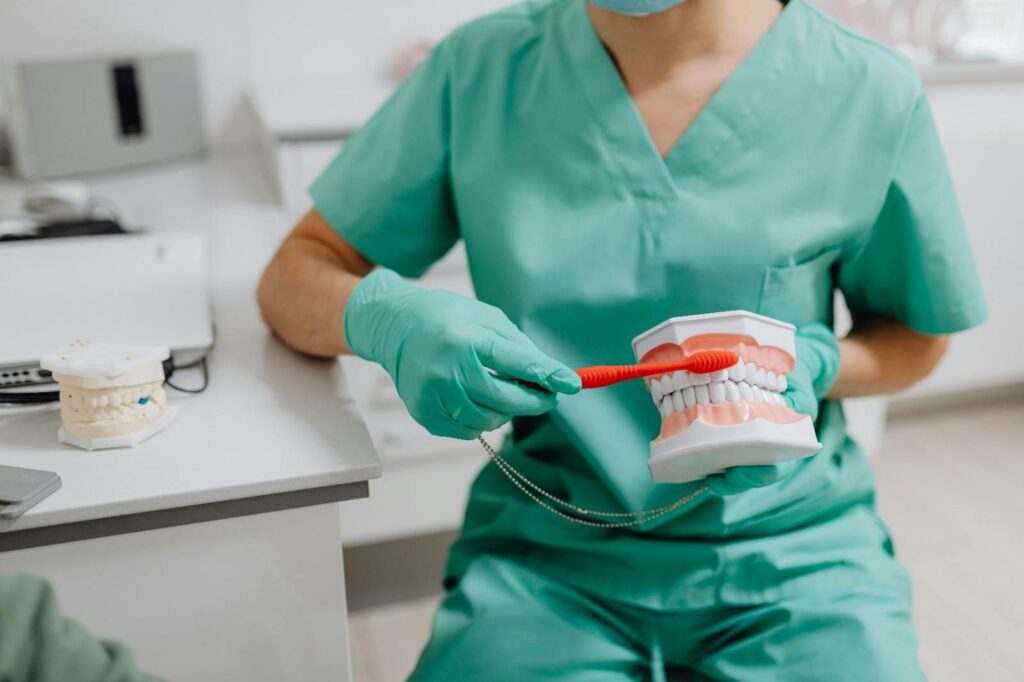One of the most important parts of oral hygiene that has a big impact on your overall dental health is brushing your teeth. Despite the seemingly simple nature of it, many individuals are ignorant of the subtleties that might improve their brushing technique. You may reduce your risk of cavities, gum disease, and other dental problems by brushing your teeth more effectively. These are seven vital pointers to improve the quality of your brushing and have a whiter, healthier smile.
Choose the Right Toothbrush
The first step to a better brushing technique is choosing the right toothbrush. Hard toothbrush bristles can erode your gums and dental enamel, so choose a soft toothbrush instead. Electric toothbrushes can give those who have trouble cleaning their teeth by hand a more reliable and thorough clean. Timer functions and pressure sensors are common additions to electric toothbrushes, which help you make sure you brush for the whole two minutes and refrain from using excessive pressure.
Use Fluoride Toothpaste
A thorough dental care regimen must include fluoride toothpaste. Tooth enamel is strengthened by fluoride, increasing its resistance to cavities and deterioration. Look for toothpaste that has fluoride as a primary component and has been authorized by dental societies. Furthermore, think about using toothpaste that has been specially made for you, such as toothpaste for sensitive teeth or toothpaste with extra whitening properties. By using fluoride toothpaste, you can be confident that your teeth are getting the defense they require to be beautiful and healthy.
Master the Proper Brushing Technique
There’s more to properly brushing your teeth than merely back-and-forth movements with the toothbrush. Instead of scrubbing vigorously, use a soft, circular motion to clean the outer layer of your teeth and gums. To get rid of any food particles or plaque that could be stuck between your teeth and gums, hold the toothbrush at a 45-degree angle to your gum line. In addition to any other surfaces, brush the front, rear, and eating surfaces of your teeth. To assist get rid of bacteria and enhance the quality of your breath, don’t forget to give your tongue and roof of your oral cavity a quick brush.
Brush for the Recommended Duration
Every time you brush, give it a minimum of two minutes to guarantee that your teeth are being fully cleaned. Many people just brush for a little period, which might not be enough to get rid of germs and plaque completely. A timer or a handheld toothbrush with a built-in timer can be used to monitor how long you brush. To guarantee a thorough and equal cleaning, divide your mouth into four regions and give each a good 30 seconds. By brushing for the entire two minutes, you can lower your risk of dental issues and preserve oral health.
Replace Your Toothbrush Regularly
Although it is an essential part of your oral hygiene regimen, your toothbrush loses some of its efficacy over time. To keep your toothbrush clean as well as it should, replace it every three to four months. Replace your toothbrush sooner if you’ve been sick or if you see that the bristles are tangled or worn out. A soiled toothbrush might retain bacteria and not clean your teeth as well. You can make sure you’re constantly utilizing a tool that can successfully maintain your oral hygiene by replacing your toothbrush on a regular basis.
Floss Daily
You cannot clean every part of your mouth with only brushing. In order to get rid of food particles and plaque from between your teeth and beneath your gum line, flossing is an essential addition to brushing. Gently glide dental floss or floss picks between each tooth, forming a C-shaped curve with the floss as you go. By cleaning places that a toothbrush cannot, this method lowers the chance of gum disease and cavities. Ideally, it would help if you floss first before brushing to promote a more complete cleaning and to support your overall dental health.
Incorporate Mouthwash into Your Routine
Using mouthwash is a good approach to improving your dental hygiene regimen, and using hydroxyapatite mouthwash can have even more advantages. Mouthwash helps get into places where brushing and flossing might miss, freshens breath, and lower bacteria. In particular, hydroxyapatite mouthwash includes hydroxyapatite, a mineral that occurs naturally and aids in strengthening and demineralizing dental enamel. This kind of mouthwash might be very helpful for people who have sensitive teeth or who wish to provide their teeth more protection against decay. You can make sure that your teeth are well-protected and that your mouth is completely clean by using mouthwash as the last step in your oral hygiene regimen.
Conclusion
You may prevent common dental disorders and preserve excellent oral health by making improvements to your brushing technique. You may improve your oral hygiene regimen by choosing the right toothbrush, using fluoride toothpaste, learning the correct brushing methods, and keeping a regular brushing schedule. Effective dental care also includes frequently changing your toothbrush, flossing once a day, and being mindful of how long you brush. By incorporating these suggestions into your daily routine, you can maintain the health of your teeth and gums, which will improve your smile and general well-being.


